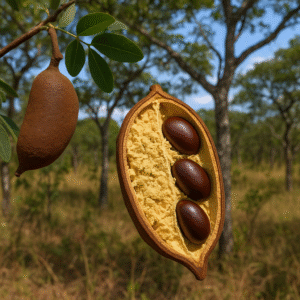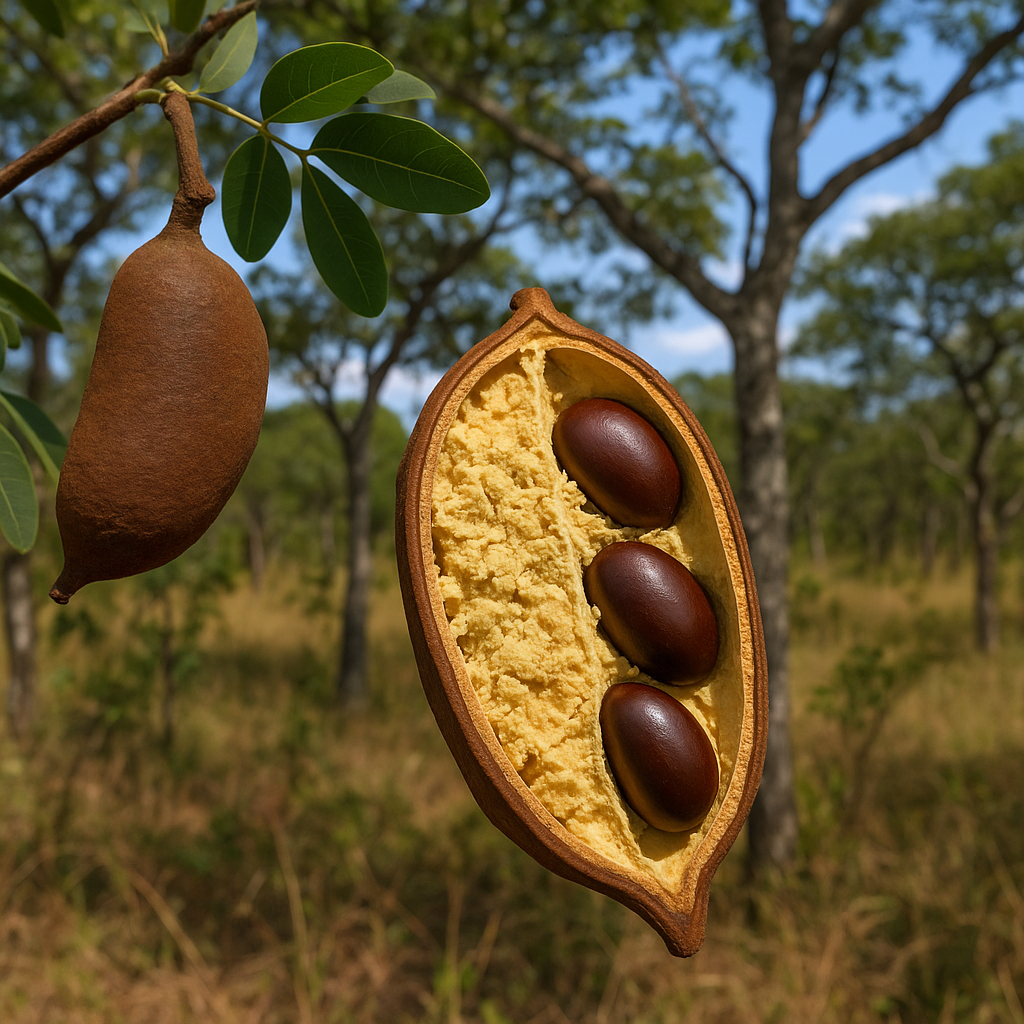The jatobá-do-cerrado (Hymenaea stigonocarpa) is one of the most emblematic trees of the Brazilian cerrado. Known for its thick bark, nutritious fruit, and resilient wood, this native species is highly valued in both folk medicine and environmental conservation. In this article, we explore the main characteristics of the jatobá-do-cerrado, its traditional uses, ecological importance, and cultivation tips.
What is the jatobá-do-cerrado?
The jatobá-do-cerrado is a medium-sized tree belonging to the Fabaceae family. Native to the Brazilian cerrado, it can be found in several central states such as Goiás, Minas Gerais, Tocantins, and Mato Grosso. This species thrives in poor soils, high temperatures, and long dry periods.
While the forest jatobá (Hymenaea courbaril) can grow over 30 meters tall in denser forests, the cerrado variety is typically smaller, reaching up to 12 meters, with a twisted trunk and open canopy—characteristics of plants adapted to dry, sunny climates.
Botanical Characteristics
- Scientific name: Hymenaea stigonocarpa
- Average height: 6 to 12 meters
- Leaves: compound, shiny, with two leaflets
- Flowers: white or pale yellow, aromatic, attractive to bees
- Fruits: hard brown pods with a floury pulp and seeds covered in a sweet aril
- Roots: deep, allowing access to underground water
These features make the jatobá-do-cerrado ideal for reforestation and land recovery projects, especially in semi-arid regions.
Medicinal uses of jatobá-do-cerrado
The bark of the jatobá tree is traditionally used in Brazilian folk medicine to treat various health issues. Key medicinal uses include:
- Respiratory conditions: teas and syrups made from the bark are used to relieve bronchitis, coughs, and lung problems.
- Anti-inflammatory action: helps reduce both internal and external inflammation.
- Digestive and tonic effects: strengthens the digestive system and improves nutrient absorption.
- Urinary tract infections: its natural compounds offer mild antimicrobial activity.
As always, any medicinal use should be guided by a qualified healthcare professional to avoid improper use or side effects.
Edible and nutritious fruit
The fruit pulp of the jatobá-do-cerrado is rich in fiber, carbohydrates, and minerals. With a sweet flavor and dry texture, it can be eaten raw or used to make flour, cookies, breads, and even fermented drinks. Because it’s highly energetic, it was traditionally consumed by Indigenous peoples and rural communities during long journeys.
Recent studies have shown that the pulp contains antioxidant properties, making it attractive to both the food and cosmetic industries.
Ecological importance
Jatobá-do-cerrado plays a vital role in the ecosystem. Its flowers attract native bees, aiding in the pollination of other plant species. Its fruits feed a wide range of wildlife, including monkeys, tapirs, anteaters, and various fruit-eating birds.
With its deep roots and spaced-out canopy, it helps prevent soil erosion and allows light to reach lower vegetation, supporting greater biodiversity.
How to plant jatobá-do-cerrado
You can grow this tree from seeds or saplings. Here are some helpful tips:
- Location: needs full sun and well-drained soil, even if low in nutrients.
- Seed prep: lightly scarify (sand) the seeds to speed up germination.
- Planting: dig 40x40x40 cm holes and mix organic matter into the local soil.
- Watering: although drought-resistant, young plants need regular watering.
- Pruning: light formative pruning can help strengthen vertical growth.
With patience and proper care, the tree can start bearing fruit in 8 to 10 years.
Fun facts
- The name “jatobá” comes from the Tupi word iatã’ba, meaning “tree with hard fruit.”
- The jatobá-do-cerrado wood is extremely strong, used in construction, furniture, and railway ties.
- Modern herbal medicine has shown growing interest in jatobá due to its anti-inflammatory and antioxidant compounds.
Conclusion
The jatobá-do-cerrado is a true Brazilian treasure—resilient, medicinal, nutritious, and ecologically essential. Preserving and cultivating this species is a way to value our biome and honor traditional knowledge. Whether for its ornamental beauty, fruit, or environmental benefits, the jatobá-do-cerrado deserves more attention in our landscapes, farms, and research.
“Relax anywhere in comfort with the Amazon Basics Camping Chair. Lightweight, durable, and easy to carry — perfect for your next adventure. Get yours today!”


